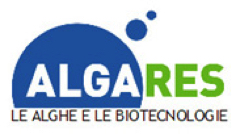2021
Magnetic beads combined with carbon black-based screen-printed electrodes for COVID-19: A reliable and miniaturized electrochemical immunosensor for SARS-CoV-2 detection in saliva
Fabiani, L., Saroglia, M., Galatà, G., De Santis, R., Fillo, S., Luca, V., Faggioni, G., D’Amore, N., Regalbuto, E., Salvatori, P., Terova, G., Moscone, D., Lista, F. Arduini, F.
Biosensors and Bioelectronics, 171, 112686, 2021
DOI: https://doi.org/10.1016/j.bios.2020.112686
Abstract
The diffusion of novel SARS-CoV-2 coronavirus over the world generated COVID-19 pandemic event as reported by World Health Organization on March 2020. The huge issue is the high infectivity and the absence of vaccine and customised drugs allowing for hard management of this outbreak, thus a rapid and on site analysis is a need to contain the spread of COVID-19. Herein, we developed an electrochemical immunoassay for rapid and smart detection of SARS-CoV-2 coronavirus in saliva. The electrochemical assay was conceived for Spike (S) protein or Nucleocapsid (N) protein detection using magnetic beads as support of immunological chain and secondary antibody with alkaline phosphatase as immunological label. The enzymatic by-product 1-naphtol was detected using screen-printed electrodes modified with carbon black nanomaterial. The analytical features of the electrochemical immunoassay were evaluated using the standard solution of S and N protein in buffer solution and untreated saliva with a detection limit equal to 19 ng/mL and 8 ng/mL in untreated saliva, respectively for S and N protein. Its effectiveness was assessed using cultured virus in biosafety level 3 and in saliva clinical samples comparing the data using the nasopharyngeal swab specimens tested with Real-Time PCR. The agreement of the data, the low detection limit achieved, the rapid analysis (30 min), the miniaturization, and portability of the instrument combined with the easiness to use and no-invasive sampling, confer to this analytical tool high potentiality for market entry as the first highly sensitive electrochemical immunoassay for SARS-CoV-2 detection in untreated saliva.
A Paper-Based Electrochemical Sensor For H2o2 Detection in Aerosol Phase: Measure of H2o2 Nebulized by a Reconverted Ultrasonic Aroma Diffuser as a Case of Study
Fiore, L., Mazzaracchio, V., Galloni, P., Sabuzi, F., Pezzola, S., Matteucci, G., Moscone, D., Arduini, F.
Microchemical Journal, 106249, 2021
DOI: https://doi.org/10.1016/j.microc.2021.106249
Abstract
The outbreak of COVID-19 is caused by high contagiousness and rapid spread of SARS-CoV-2 virus between people when an infected person is in close contact with another one. In this overall scenario, the disinfection processes have been largely improved. For instance, some countries have approved no-touch technologies by vaporizing disinfectants such as hydrogen peroxide, with the overriding goal to boost the safety of the places. In the era of sustainability, we designed an electrochemical paper-based device for the assessment of hydrogen peroxide nebulized by a cost-effective ultrasonic aroma diffuser. The paper-based sensor was fabricated by modifying via drop-casting a filter paper-based screen-printed electrode with a dispersion of carbon black-Prussian Blue nanocomposite, to assess the detection of hydrogen peroxide at -0.05 V vs Ag/AgCl. The use of paper-based modified screen-printed electrode loaded with phosphate buffer allowed for monitoring the concentration of hydrogen peroxide in aerosol, without any additional sampling instrument to capture the nebulized solution of hydrogen peroxide at a concentration up to 7 % w/w. Hydrogen peroxide, a reconverted ultrasonic aroma diffuser, and the paper-based electrochemical sensor assisted by smart-phone have demonstrated how different low-cost technologies are able to supply an useful and cost-effective solution for disinfection procedures.
2020
New Consensus pattern in Spike CoV-2: potential implications in coagulation process and cell-cell fusion
Buonvino, S., & Melino, S.
Cell Death Discov. 6, 134, 2020
DOI: https://doi.org/10.1038/s41420-020-00372-1
Abstract
Here, we identified a potential consensus pattern in the Spike S glycoprotein present within the cytoplasmic domain. Interestingly, the pattern was present in both human and bat the coronaviruses S proteins, in many proteins involved in coagulation process, cell-cell interaction, protein aggregation and regulation of cell fate, such as von Willebrand factor, coagulation factor X, fibronectin and Notch, characterized by the presence of the cysteine-rich EGF-like domain. This finding may suggest functional similarities between the matched proteins and the CoV-2 S protein, implying a new possible involvement of the S protein in the molecular mechanism that leads to the coagulopathy and cell fusion in COVID-19 disease.
Molecular Investigation of SARS–CoV-2 Proteins and Their Interactions with Antiviral Drugs
Calligari, P., Bobone, S., Ricci, G., & Bocedi, A.
Viruses, 12(4), 445. 2020
DOI: https://doi.org/10.3390/v12040445
Abstract
A new Coronavirus strain, named SARS-CoV-2, suddenly emerged in early December 2019. SARS-CoV-2 resulted in being dramatically infectious, with thousands of people infected. In this scenario, and without effective vaccines available, the importance of an immediate tool to support patients and against viral diffusion becomes evident. In this study, we exploit the molecular docking approach to analyze the affinity between different viral proteins and several inhibitors, originally developed for other viral infections. Our data show that, in some cases, a relevant binding can be detected. These findings support the hypothesis to develop new antiviral agents against COVID-19, on the basis of already established therapies.
Can COVID-19 pandemic boost the epidemic of neurodegenerative diseases?
Verkhratsky, A., Li, Q., Melino, S., Melino, G., & Shi, Y.
Biology direct, 15(1), 1-8, 2020
DOI: https://doi.org/10.1186/s13062-020-00282-3
Abstract
COVID-19 affects the brain in many ways including direct infection of neural cells with SARS-CoV-2, severe systemic inflammation which floods the brain with pro-inflammatory agents thus damaging nervous cells, global brain ischaemia linked to a respiratory failure, thromboembolic strokes related to increased intravascular clotting and severe psychological stress. COVID-19 is manifested by neurological and neuropsychiatric symptoms that include dizziness, disturbed sleep, cognitive deficits, delirium, hallucinations and depression. All these indicate the damage to the nervous tissue which may substantially increase the incidence of neurodegenerative diseases and promote dementia.
A rapid screening method for testing the efficiency of masks in breaking down aerosols
Amendola, L., Saurini, M. T., Di Girolamo, F., & Arduini, F.
Microchemical Journal, 157, 104928, 2020
DOI: https://doi.org/10.1016/j.microc.2020.104928
Abstract
The highest risk of novel coronavirus SARS-CoV-2 to be spread through human-to-human transmission has boosted the use of personal protective equipment at worldwide level. In Europe, the medical face masks must be tested to certify the essential requirements in agreement with European Standard EN 14683:2019, and face masks for industrial use in agreement with European Standard EN 149:2009. Due to the need of large quantitative of medical and non-medical face masks in coronavirus outbreak, several Italian industries are working for shift a portion of their manufacturing capacity for producing medical and non-medical face mask. For screening evaluation of the effectiveness of personal protective equipment produced by reconverted industries, ARPA Lazio and the Department of Chemical Science and Technologies of Tor Vergata University have set-up an analytical system able to simulate the respiratory action and to measure the percentage of particles that pass through the face masks using optical particle counter (based on the EN 16890: 2017 that uses the same light scattering principle to evaluate the filter filtration efficiency). This set-up was challenged using face masks produced by reconverted industries and the data were compared with ones obtained using medical face mask.

 Descrizione attività
Descrizione attività Descrizione attività
Descrizione attività Descrizione Attività
Descrizione Attività Descrizione attività
Descrizione attività